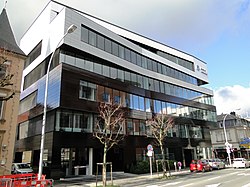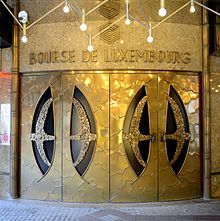Agreements with other exchanges
In November 2000, LuxSE signed a cooperation agreement with Euronext. [6] As part of the agreement, trades in Luxembourg are generated through Euronext's Universal Trading Platform (UTP) allowing existing Euronext members to activate a cross-membership status on LuxSE.
On January 13, 2020 Chongwa (Macau) Financial Assets Exchange Co., Ltd. and the Luxembourg Stock Exchange signed a memorandum of understanding on cooperation in Macau . The two parties will carry out two-way bond listing, assets and investment funds and other cooperation to promote cross-border investment and offshore Liquidity in the RMB bond market.
On 23 August 2023, the company formed EuroCTP as a joint venture with 13 other bourses, in an effort to provide a consolidated tape for the European Union, as part of the Capital Markets Union proposed by the European Commission.
Bonds
The Luxembourg Stock Exchange specialises primarily in the listing of international bonds, in which it ranks first in Europe with 25,831 debt securities listed as of August 2016. [2] In 1963, with the issue of Italian Autostrade bonds, it became the first exchange globally to list a Eurobond, an international bond denominated in a currency not native to the country where it was issued. [7] [8] [2] To this day, Luxembourg has maintained a dominant position in European bond issues with approximately 40% of all cross-border securities in Europe listed in Luxembourg. [9] [10] [3]
Over 70 countries list at least some of their sovereign debt in Luxembourg. Luxembourg is also a preferred debt market for supranational entities such as the European Bank for Reconstruction and Development, European Commission, European Investment Bank and World Bank. [2]
In 2007, the LuxSE was the first stock exchange in the world to list a bond labelled green, i.e. a "climate awareness bond" [11] [12] [4] issued by the European Investment Bank. In 2015, the Exchange listed green bonds worth $11.7 billion, followed by a $9.6 billion-worth issuance in the first seven months of 2016.

A security is a tradable financial asset. The term commonly refers to any form of financial instrument, but its legal definition varies by jurisdiction. In some countries and languages people commonly use the term "security" to refer to any form of financial instrument, even though the underlying legal and regulatory regime may not have such a broad definition. In some jurisdictions the term specifically excludes financial instruments other than equity and fixed income instruments. In some jurisdictions it includes some instruments that are close to equities and fixed income, e.g., equity warrants.
In finance, a high-yield bond is a bond that is rated below investment grade by credit rating agencies. These bonds have a higher risk of default or other adverse credit events but offer higher yields than investment-grade bonds to compensate for the increased risk. As of 2024, high-yield bonds have a higher yield than U.S. Treasury securities.

In finance, a bond is a type of security under which the issuer (debtor) owes the holder (creditor) a debt, and is obliged – depending on the terms – to provide cash flow to the creditor The timing and the amount of cash flow provided varies, depending on the economic value that is emphasized upon, thus giving rise to different types of bonds. The interest is usually payable at fixed intervals: semiannual, annual, and less often at other periods. Thus, a bond is a form of loan or IOU. Bonds provide the borrower with external funds to finance long-term investments or, in the case of government bonds, to finance current expenditure.
A municipal bond, commonly known as a muni, is a bond issued by state or local governments, or entities they create such as authorities and special districts. In the United States, interest income received by holders of municipal bonds is often, but not always, exempt from federal and state income taxation. Typically, only investors in the highest tax brackets benefit from buying tax-exempt municipal bonds instead of taxable bonds. Taxable equivalent yield calculations are required to make fair comparisons between the two categories.
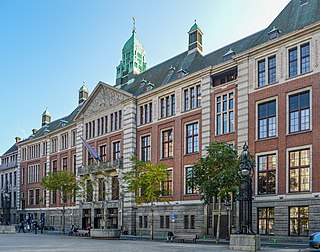
Euronext N.V. is a European bourse that provides trading and post-trade services for a range of financial instruments.

The Tel Aviv Stock Exchange, colloquially known as The Bursa, is the only public stock exchange in Israel and a public company itself, listed on its own exchange since August 1, 2019. It is regulated by the Securities Law (1968) and is under the direct supervision of the Israel Securities Authority (ISA).

Euronext Dublin is Ireland's main stock exchange, and has been in existence since 1793.
The bond market is a financial market in which participants can issue new debt, known as the primary market, or buy and sell debt securities, known as the secondary market. This is usually in the form of bonds, but it may include notes, bills, and so on for public and private expenditures. The bond market has largely been dominated by the United States, which accounts for about 39% of the market. As of 2021, the size of the bond market is estimated to be at $119 trillion worldwide and $46 trillion for the US market, according to the Securities Industry and Financial Markets Association (SIFMA).

Borsa Italiana, based in Milan at Mezzanotte Palace, is the Italian stock exchange. It manages and organises domestic market, regulating procedures for admission and listing of companies and intermediaries and supervising disclosures for listed companies.
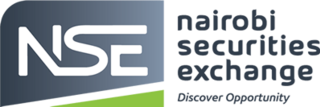
The Nairobi Securities Exchange (NSE) was established in 1954 as the Nairobi Stock Exchange, based in Nairobi the capital of Kenya. It was a voluntary association of stockbrokers in the European community registered under the Societies Act in British Kenya. The exchange had 66 listed companies in February 2021.

The Borsa İstanbul is the sole exchange entity of Turkey combining the former Istanbul Stock Exchange (ISE), the Istanbul Gold Exchange and the Derivatives Exchange of Turkey under one umbrella. It was established as an incorporated company with a founding capital of ₺423,234,000 on April 3, 2013, and began to operate on April 5, 2013. Its slogan is worth investing.

Euronext Paris, formerly known as the Paris Bourse, is the official stock exchange in France. It is Europe's second largest stock exchange as of December 2023. It was formerly seated at the Palais Brongniart in Paris, its long-standing home. As of 2022, the 795 companies listed had a combined market capitalization of over US$4.58 trillion.

Euronext Lisbon is a stock exchange in Lisbon, Portugal. It is part of Euronext pan-European exchange. The most famous index is PSI-20.
The Beirut Stock Exchange is the principal and only stock exchange of Lebanon. Located in Beirut, it is a public institution run by a committee including a chairman, a vice-chairman and eight members appointed via a decree issued by the Council of Ministers, in accordance with a proposal by the Minister of Finance. All BSE members are Lebanese Joint stock companies (SAL) with a capital above £L500,000 and registered at the secretariat of the Commercial Register in. Members include holding companies and offshore companies. The BSE authorizes Brokerage firms the operation and trade in securities listed on the BSE according to the Bourse trading system and also lists the issuing companies that have any of their stocks or other financial instruments listed. In January 2024 the market value of the Exchange was 20.4 billion USD.

The Lusaka Securities Exchange is the principal stock exchange of Zambia. Founded in 1993, it is located in Lusaka. The LuSE is a member of the African Stock Exchanges Association.
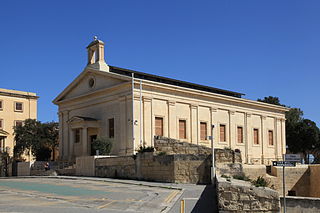
The Malta Stock Exchange, known as the Borża ta' Malta, is the stock exchange of the island nation of Malta. Since being set up in 1992, the Exchange has been key to the raising of capital for the private sector through the issue of corporate bonds and equity while virtually all the national debt of Government of Malta has been issued in the form of Malta Government bonds and treasury bills that are listed and traded on the secondary market.
The LuxX Price is the main stock market index of the Luxembourg Stock Exchange, the stock exchange based in Luxembourg City, in southern Luxembourg. The LuxX is a weighted index of the nine most valuable listed stocks by free floated market capitalisation. The index was fixed at 1,000 on 4 January 1999: the first day of trading after Luxembourg adopted the euro. The nine companies currently included in the index are:
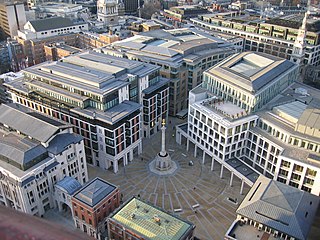
London Stock Exchange Group plc, also known as LSEG, is a global provider of financial markets data and infrastructure. Headquartered in London, England. It owns the London Stock Exchange, Refinitiv, LSEG Technology, FTSE Russell, and majority stakes in LCH and Tradeweb.
LCH is a financial market infrastructure company headquartered in London that provides clearing services to major international exchanges and to a range of OTC markets. The LCH Group includes two main entities: LCH Limited based in London and LCH SA based in Paris.
A Sustainability-linked bond (SLB) is a fixed income instrument (Bond) where its financial and/or structural characteristics are tied to predefined Sustainability/ESG objectives. The objectives are measured through predefined Key Performance Indicators (KPIs) and evaluated against predefined Sustainability Performance Targets (SPTs).

